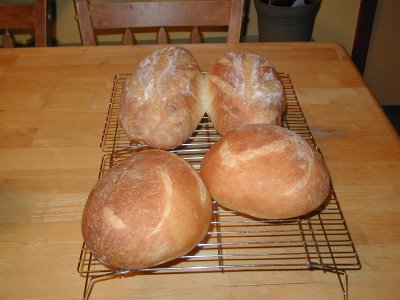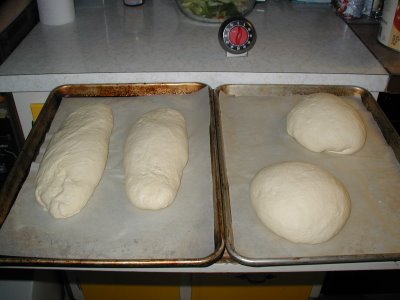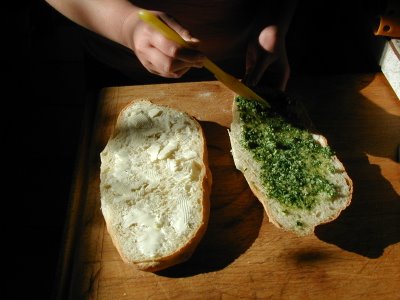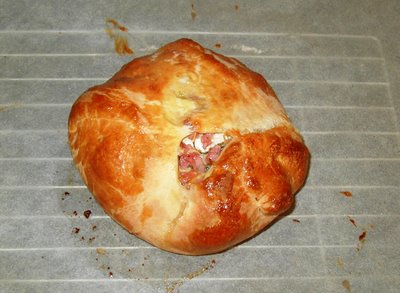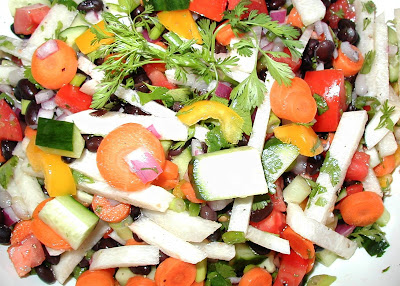
Colorful, ain't it?
This salad began a few years ago as an experiment with leftover black beans and rice. I added vegetables and herbs, oil and vinegar and really enjoyed the result.
As I age and become more mindful of a strong family history of cardiac and diabetic problems, though, I decided to update the recipe to suit those needs.
Start with:
cooked black beans (canned is fine, just be sure to rinse off the brine), diced vegetables and chopped herbs. I like to use as many colors as possible, with lots of crunch and texture. In the one pictured, I used:
- jicama (toss with a little lime juice before adding to salad to preserve color)
- jalapeno (de-seed to reduce heat, if desired)
- red bell pepper
- yellow bell pepper
- tomato
- english cucumber
- zucchini
- red onion
- carrot
- green onion
- cilantro
The dressing is simply extra-virgin olive oil and vinegar, along with salt and freshly ground black pepper. I used a combination of about half rice and half white wine vinegars, but in the past I've also enjoyed apple cider, sherry and white balsamic vinegars.
Have you discovered the joy of white balsamic vinegar?
It tastes roughtly the same as the regular variety, but in a salad like this one, using the white version will preserve all those pretty colors.




